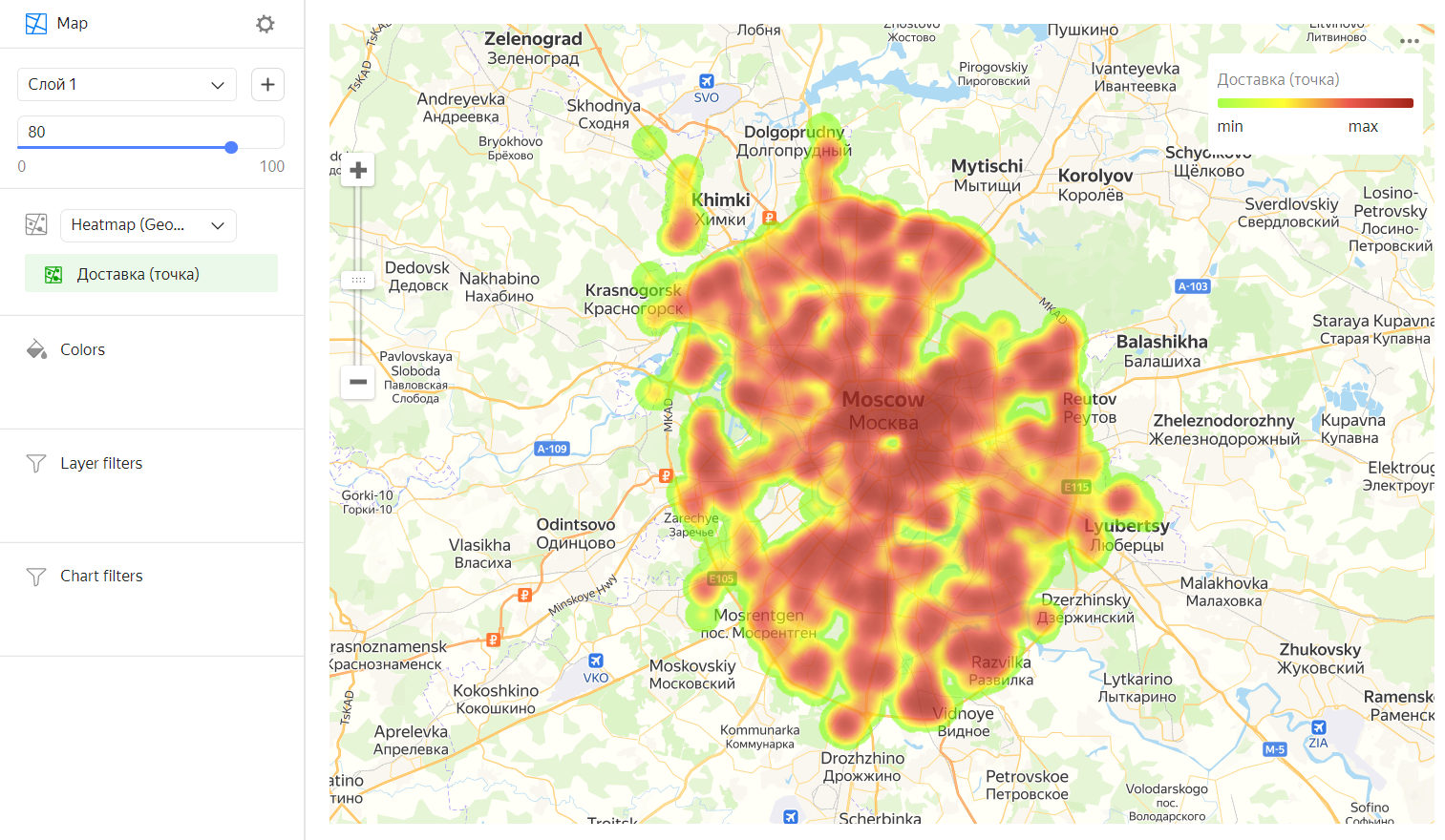Heat map
A heat map shows the density of point distribution. Map areas are colored with a gradient ranging from green to red: the more points are grouped in an area, the closer its color is to red. Heat maps are used to display concentrations of a large number of points.
A heat map is most effective when working with a dataset that contains a lot of points located within a small geographic area. If there are few points on a map, their fill intensity can be indicated by a measure value: the higher the value, the closer the point color to red.
A heat map helps find dependencies that can be hidden due to overlapping map points (like on a point map). For example, you can use a heat map to determine the districts where customers order for delivery most often.

Wizard sections
| Wizard section |
Description |
|---|---|
| Heat map (Geopoints) | Measure of the Geopoint type |
| Colors | Dimension or measure. Affects the intensity of point fill. |
| Layer filters | Dimension or measure. Used as a filter for the current layer. |
| Filters | Dimension or measure. Used as a filter for the entire chart. |
Creating a heat map
Warning
If you use a new DataLens object model with workbooks and collections:
- Go to the DataLens home page
- Open the workbook, click Create in the top-right corner, and select the appropriate object.
Follow the guide from step 4.
- Go to the DataLens home page
- In the left-hand panel, select
- Click Create chart → Chart.
- At the top left, click
- Select Map for chart type.
- Select the Heat map (Geopoints) layer type.
- Drag a dimension of the Geopoint type from the dataset to the layer type selection section.
- Change the weight of the points on the heat map. To do this, drag the measure to the Colors section.
- Optionally, update the color settings for the measure.
Note
You can show a particular area on the map using the Center and Scale settings.
You can also:
- Add, rename, and delete a layer.
- Apply a filter to the whole chart or one layer.
Color setting
To change the color settings:
-
Click
-
In the color settings, specify:
- Gradient type: Select two or three colors.
- Gradient color: Select a color palette for the gradient from the list.
- Gradient direction: Change the gradient direction using the
- Set threshold values: Set numeric thresholds for each color.
-
Click Apply.
Recommendations
- Use a heat map if there are a lot of points in your dataset. If there are few points, using this type of map may distort the detected dependencies.
- The intensity of point and area fill on a heat map varies depending on the map's scale. Please keep this in mind.